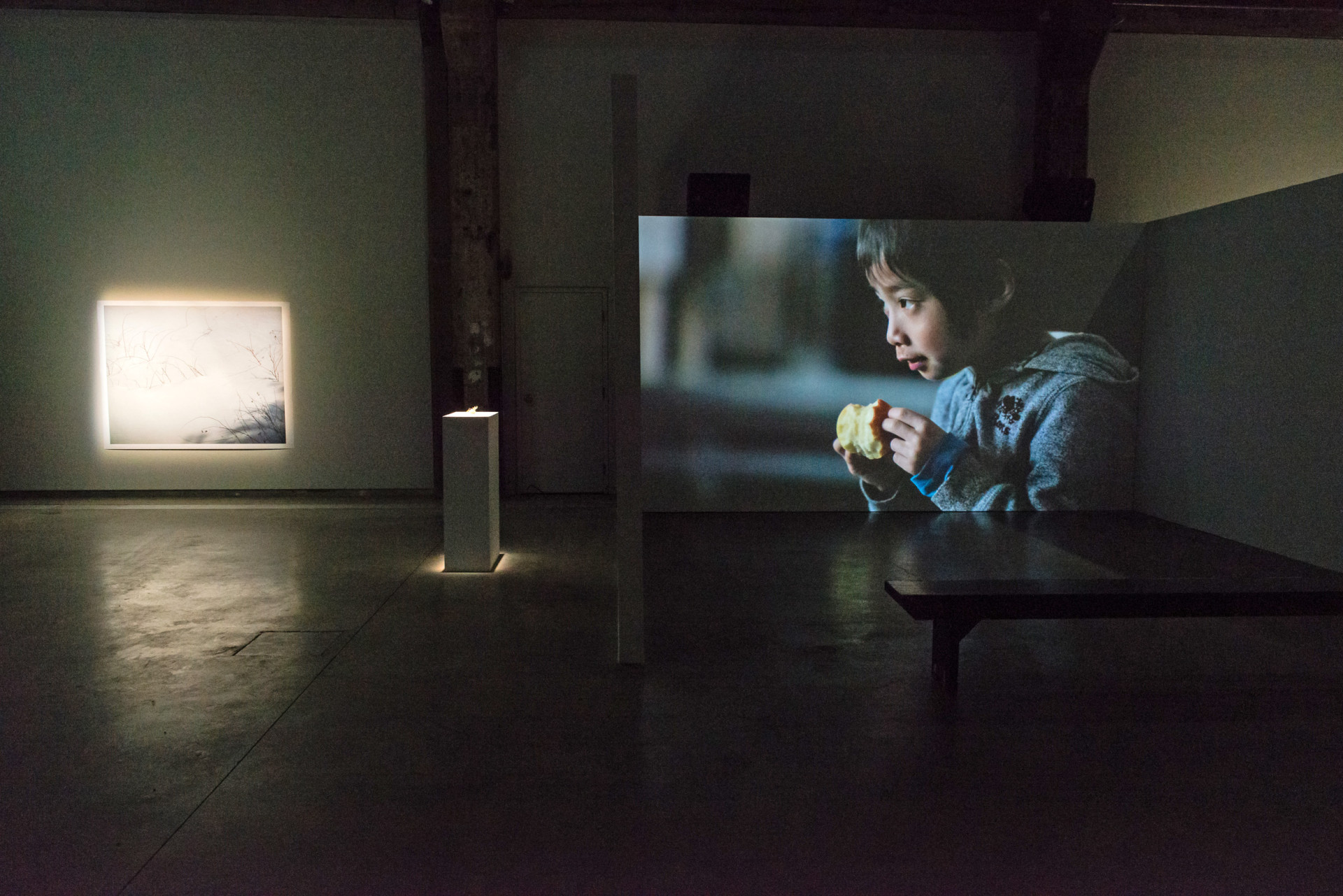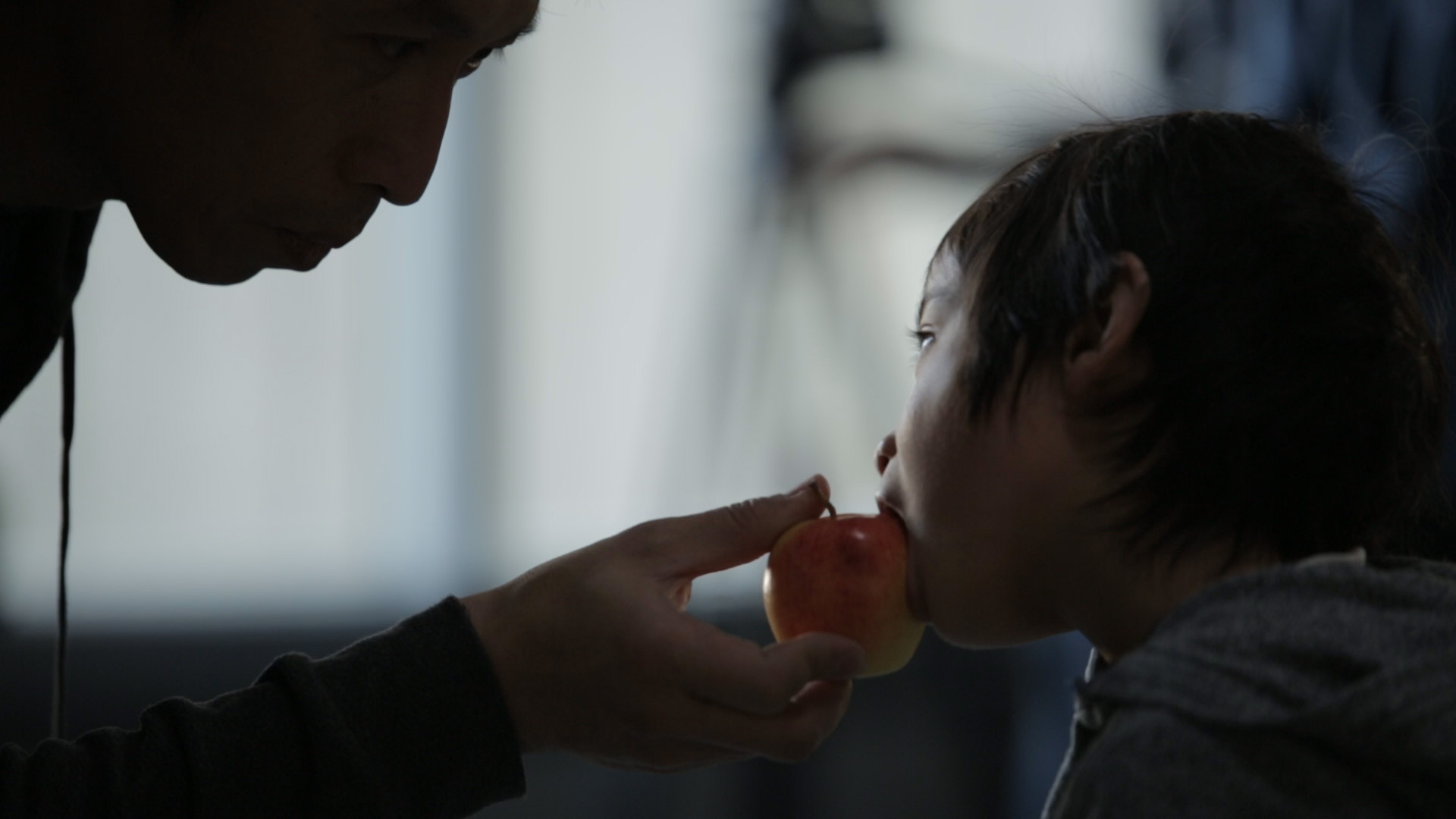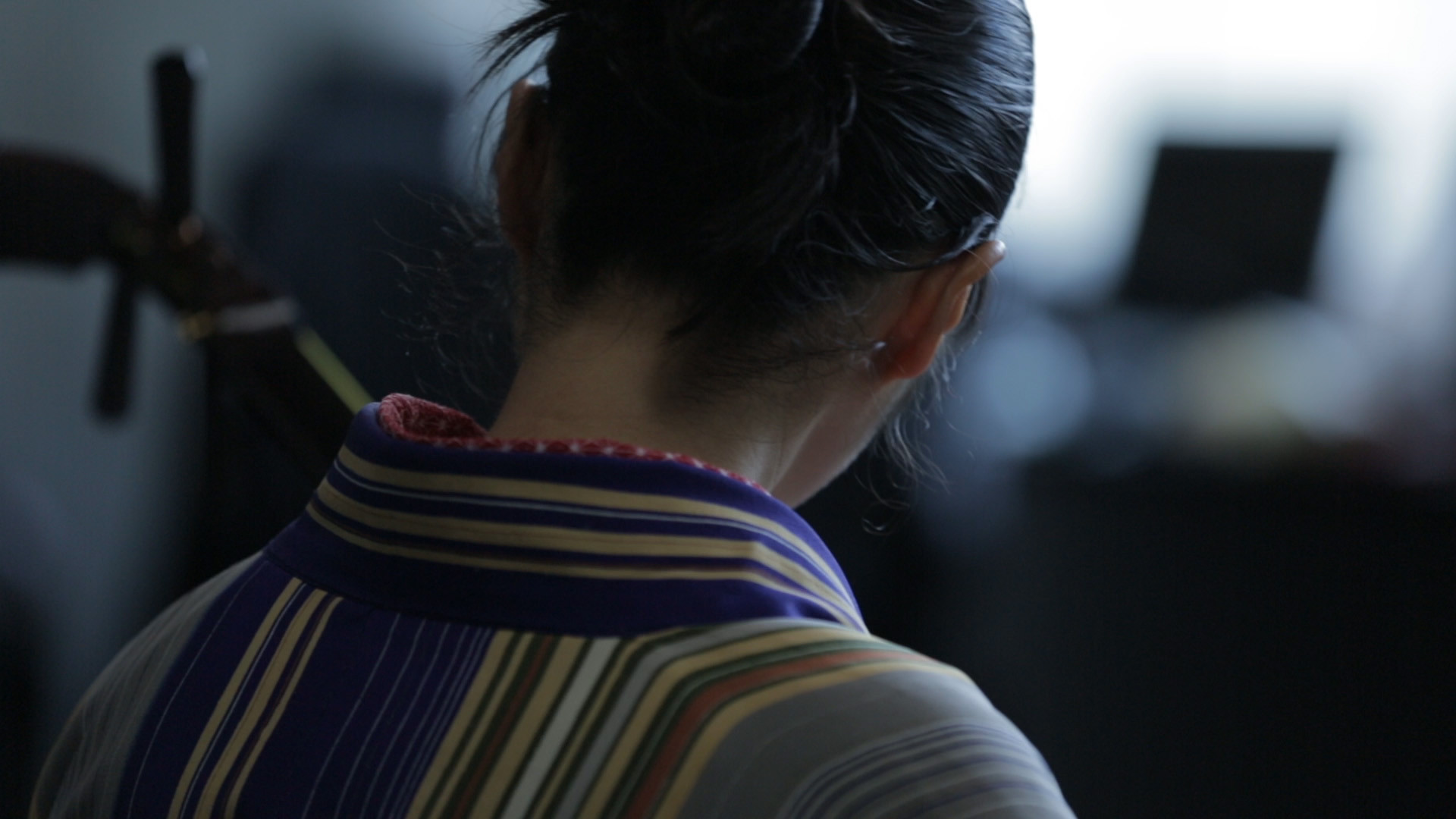


The Act of Forgetting is the last in a series of exhibitions held over the last two years, marking Chih-Chien Wang’s move towards an emancipation of media, exploring new formats in his incessant quest to tangibly convey the intimacy of human beings through art. Of the same title as the exhibition, his latest video piece is featured with a double projection, in two adjoining semi-closed spaces, which echo one another. The installation is completed by previously unseen photography, a stage for one-time performances, and objects randomly left in the space by visitors—all serving as vehicles to capture our innermost feelings.
Individuals or small groups of people, forming a total of approximately ten artists, were invited to “expose” themselves. Actors, authors, musicians, singers and dancers open up through talking, performing, singing, playing, and improvising on camera. Words and gestures reveal inwardness, expression and body language; evoke personalities constructed by an interweaving of memories and experiences, both conscious and unconscious; and reflect a diversity of cultures, origins and sensibilities. Acknowledging the antitheses in his approach, Wang announces that “The Act of forgetting is an act of re-experiencing and an act of reminding.” The artist therefore aims to thwart memories and reveal the contradictory role of an actor portraying another character: “I am interested in the counter force of it: to remember, to be remembered, to affirm.” How to differentiate reality from make-believe in the very personal tales told by each character? How do our memories place more importance on some events compared to others, and alter our perceptions and interpretations? A series of interviews carried out by the artist points out that we are just as inclined to remember and forget elements from the distant and more immediate past.
The intimacy between two people, or in small groups, is explored through dialogue, discussions, choreographies, and playful glances. Relationships between father and son; and between two characters, who are theoretically distant from each other, are recurrent. Intimate relationships are developed between two beings, through improvised hand-to-hand interactions, a discussion about art, and the playing of musicians, often enabling dialogue without relying on words.
Similarly, the traces and clues that visitors are invited to “forget” directly in the exhibit tend to reveal part of the self. A stage at the end of the space invites visitors to perform and leave their imprints on soft asphalt. They are also invited to leave personal belongings, which they are encouraged to trade, thus furthering Wang’s desire to emphasize the unspeakable.
Multiple camera viewpoints serve as a vehicle for many types of image capturing. One intrusive camera shows automatically looped footage, based on an uninterrupted travelling shot scrutinizing each character. Another bit of short and unpredictable footage captures close-up details. The actors and filming team mingle in the background, reinforcing the tensions between private and public, the realities of make-believe. In the past few years, Wang has introduced numerous recurrent shifts in his work, again to highlight the subjectivity involved in interpreting events. The doubts created by the tension between reality and make-believe—through re-performing specific scenes or memorization exercises left hanging and open to the public’s interpretation—are superimposed with the desynchronization of two projections, presenting slight differences, which become more and less pronounced at various times. Just like the four photos displayed, which work in tandem and emphasize the ephemeral nature of events.
A departure from the daily objects his work has been recognized for, Wang is currently interested in individuals and their intimacy. His intention is to evoke how each individual is shaped by events and sensitivities, whether acknowledged or hidden, and of which he strives to reveal the aura.
Caroline Andrieux
Chih-Chien Wang
Chih-Chien Wang was born in Taiwan and has resided in Montreal since 2002, where he completed a Master’s degree in Photography in the Department of Studio Arts at Concordia University, following his studies in Cinema and Theatre at the Chinese Culture University in Taipei, Taiwan. His work is the subject of recent solo exhibitions at venues such as Centre Expression de St-Hyacinthe, in 2014; Centre Space in Toronto and Musée régional de Rimouski, in 2013; the Montreal Museum of Fine arts, in 2012; and his first solo exhibition in 2005, presented by Dazibao. He is also included in numerous group shows, including Out of Grace, at the Leonard and Bina Ellen Art Gallery in Montral, in 2010, initiated by Lynda Gaudreau; the Quebec Triennial’s Nothing is lost, nothing is created, everything is transformed at the Musée d’art contemporain de Montréal, in 2008; and Faking Death: Canadian Art Photography and the Canadian Imagination, at the Jack Shainman Gallery in New York, in 2006. Represented by Pierre-François Ouellette Art Contemporain, his artworks can be found within the collections of several important Canadian and international institutions.
Curator
Caroline Andrieux
